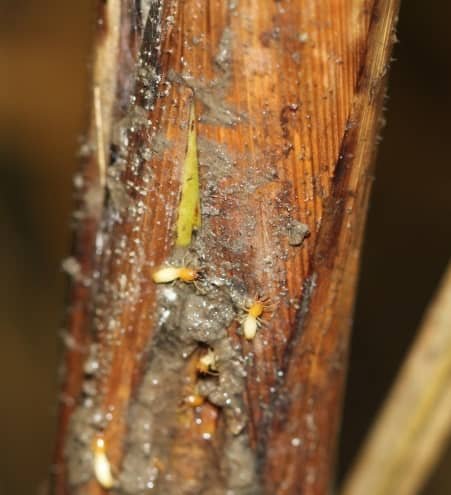
Sugarcane Termite
- Scientific name: Odontotermes lokanandu.
- Family: Termitidae.
- Order: Isoptera.
Pest characters of Sugarcane Termite
1. They are social insects, live in a colony, wings develop secondarily.
2. The main species of termite are found are;
- Microtermes obesi
- Odontotermes obesus.
- Termes tabrobanses
3. They live underground but make small earthen mounds or earthen passages visible above the ground. Their colony Organization is based on a caste system. In a colony, there are numerous workers, one queen and a king, and a good number of complementary forms of true but young males and females.

Nature of Damage of Sugarcane Termite
- They enter into the setts either into the cut ends or eye buds and destroy the whole setts.
- If plants are attacked at the early stage, they feed on roots and inside the stem. As a result, the seedlings may die. If the seedlings do not die, it becomes very weak with discolored foliage and little growth of roots developed.
How to control Sugarcane Termite?
We can control sugarcane termite in two ways-
Nonchemical control of sugarcane termite
- Destroying termites’ nests with the queen.
- Flood irrigation.
- Avoid crop ratooning.
Sugarcane termite control insecticide (chemical control)
- Applying Admire 200 SL @ 1 L/ha.
- Applying Actara 25 WG @ 300 g/ha.
- Applying Furadan 5G @ 6.8 kg/acre of land.
- Application of Tolstar 2 WP @ 10 kg/ha.
